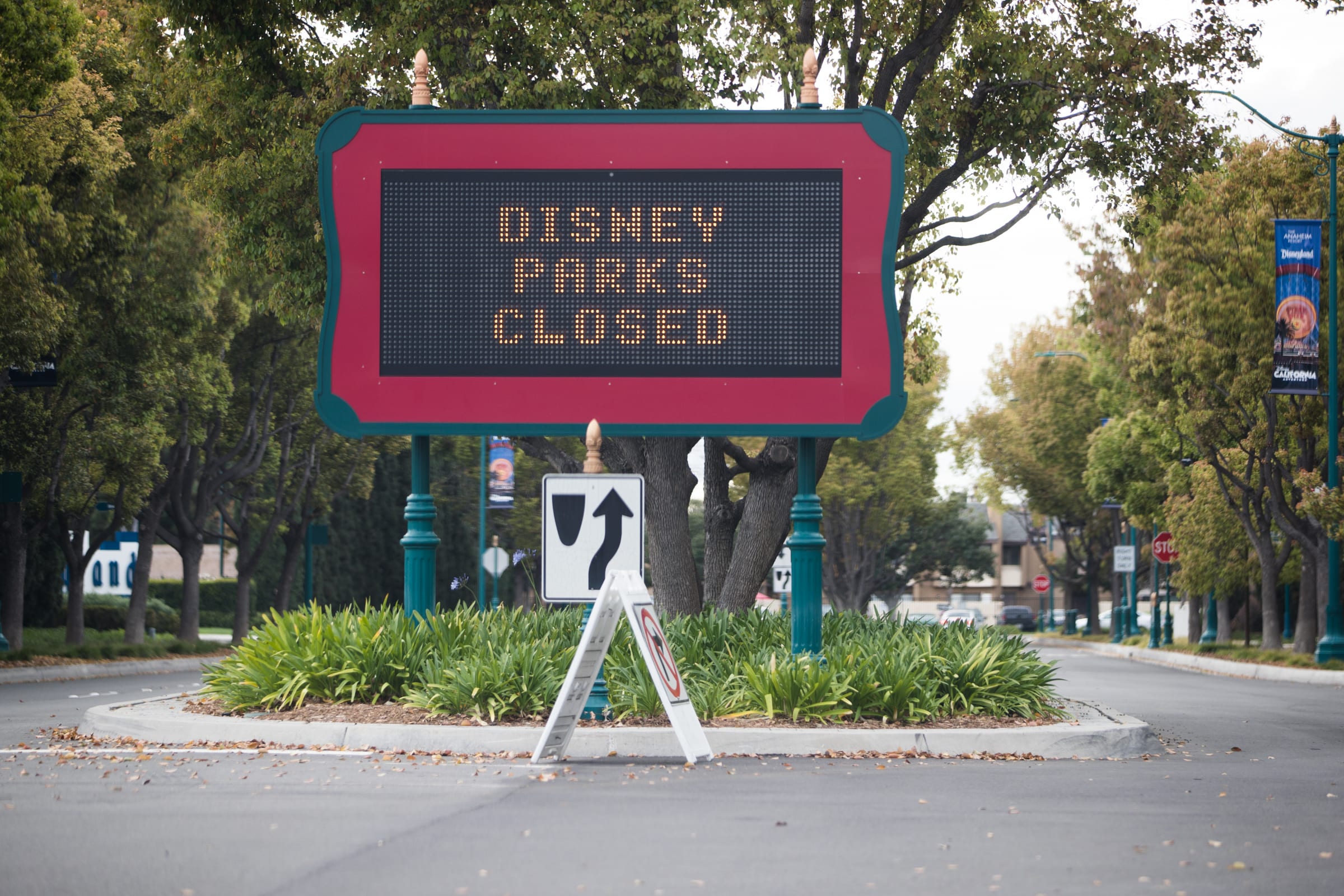The Walt Disney character Mickey Mouse greets children at Magic Kingdom in Orlando, Florida.
Getty Images
Last year, Disney’s Parks, Experiences and Consumer Products segment was its fastest-growing profit driver. Now, it could be the company’s biggest drag on earnings, thanks to the Covid-19 outbreak.
The coronavirus pandemic has caused many headaches for Disney. The company has faced movie theater closures, film and TV production shutdowns, docked cruise ships and the suspension of most live sporting events.
However, its theme parks are expected to take the biggest hit.
On Tuesday afternoon, Disney is set to tell investors how the company fared during the first three months of the year, its fiscal second-quarter. However, the true scale of the outbreak’s impact on Disney won’t be clear until late summer.
The coronavirus pandemic has crippled the theme park industry, causing amusement parks around the globe to shutter in order to stem the rate of infection.
Disney’s parks are part of a larger segment that includes experiences — cruises, resorts and guided tours — and consumer products that range from T-shirts to kitchenwares.
Last year, this segment accounted for 37% of the company’s $69.6 billion in total revenue.
The success of the Parks, Experiences and Consumer Products arm of the company is likely part of the reason that its head Bob Chapek was tapped to take the role of CEO from long-time Disney leader Bob Iger.
Disney declined CNBC’s request for comment on this story.
Park closures
The first theme park closures Disney faced were in Asia. On Jan. 25, the company was forced to shutter Shanghai Disney. A day later, it closed Hong Kong Disneyland.
When Disney reported its first-quarter earnings on Feb. 4, it told investors that it expected to take a $175 million hit from the closures of those two parks, if they remained shuttered for two months.
By Feb. 29, Disney was forced to close Tokyo Disneyland, as Japan tightened restrictions on public gathering locations.
Disney was able to reopen Disneytown, a shopping center, Wishing Star Park and the Disneyland Hotel in Shanghai on March 9. However, almost a week later on March 14, the company shuttered Disneyland in California and Disneyland Paris. Walt Disney World closed to the public on March 15.
Disney theme parks are closed as the coronavirus continues to spread across the United States on March 14, 2020 in Anaheim, California.
Rich Fury | Getty Images
Over the next week, Disney hotels and shopping centers in California and Florida closed. As of Monday, Disney has not disclosed plans for any park reopening.
Currently, analysts are split on when theme parks will reopen in the U.S., in particular. John Hodulik, the managing director of investment research at global financial firm UBS, doesn’t foresee park doors opening until 2021. Whereas, Alexia Quadrani, from JPMorgan, suggests parks could open as soon as June 1.
Rival Universal Studios is using May 31 as a placeholder date for a possible opening.
The coronavirus effect
In 2019, Disney’s Parks, Experiences and Consumer Products segment garnered $6.17 billion in revenue during the second quarter ending March 30, representing 41.3% of Disney’s total revenue during that three-month period.
While Disney will take a hit from parks being closed for a portion of the second quarter, the third quarter will be much worse, as parks will likely have been closed for the full three-month period.
To reduce costs, Disney has furloughed as many as 100,000 workers, mostly park employees, slashed executive pay and taken a $5 billion line of credit. In June, Disney’s board will decide if it will pay its usual summer dividend.
Hodulik predicts that profit in the Parks, Experiences and Consumer Products division will fall around $500 million this year and $200 million in 2021.
Disney, as well as other theme park owners, will likely face difficulties when reopening parks, as the need for social distancing, travel restrictions and new health precautions will remain until there is a widely available vaccine.
Tourists at Disney town on May 05, 2020 in Shanghai, China.
Hu Chengwei | Getty Images
“We believe the lingering effects of the COVID-19 outbreak will be felt for a number of years and the parks segment is unlikely to regain previous thresholds for profitability until after a vaccine is widely available,” Hodulik said.
In Florida, the Orange County Economic Recovery Task Force suggested a two-phase plan for allowing visitors back into theme parks. The first phase would cap attendance at 50% capacity and the second phase would allow for 75% capacity once pandemic conditions improve.
So far, California has not issued any specific guidelines for theme park reopenings. It is unclear what international protocols will be.
Disney is set to report fiscal second-quarter earnings after the closing bell on Tuesday May 5.
Disclosure: Comcast is the parent company of NBCUniversal, Universal studios and CNBC.
